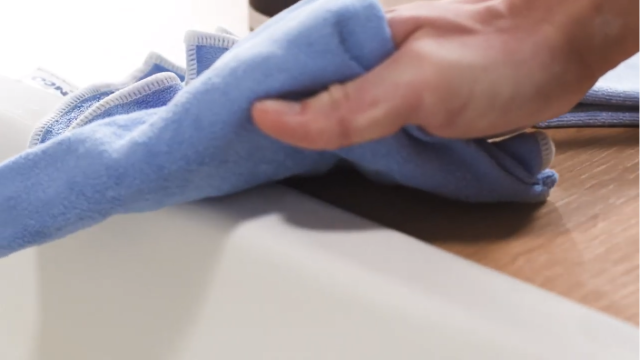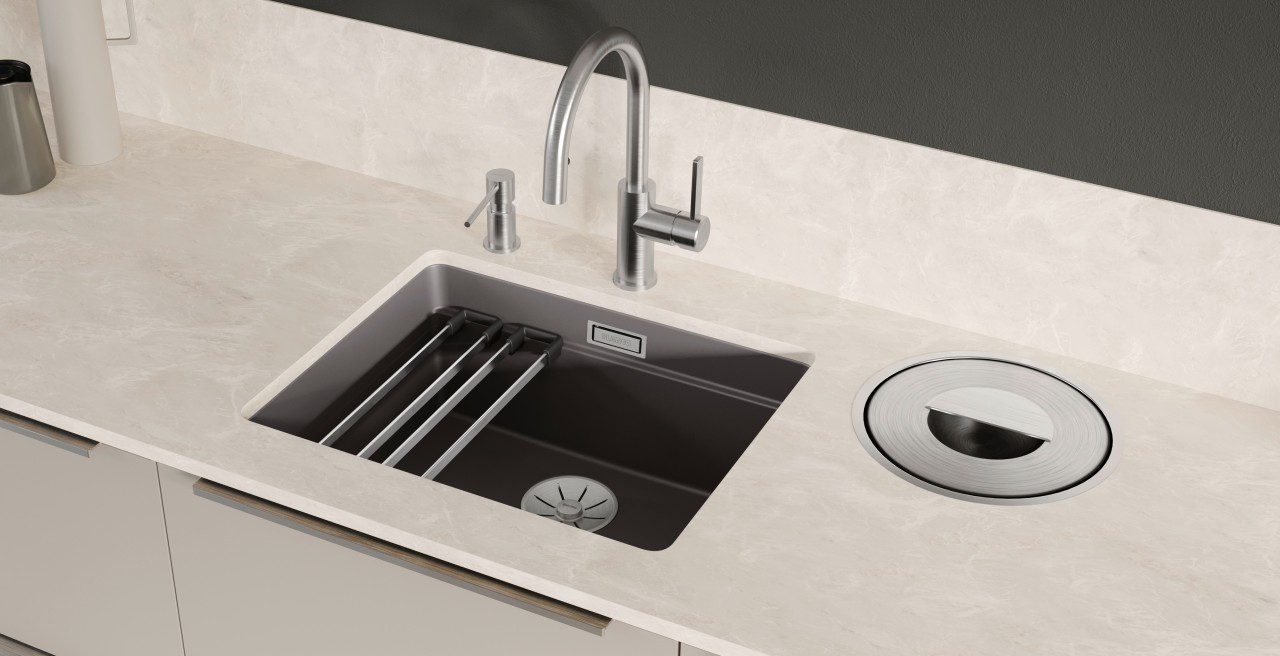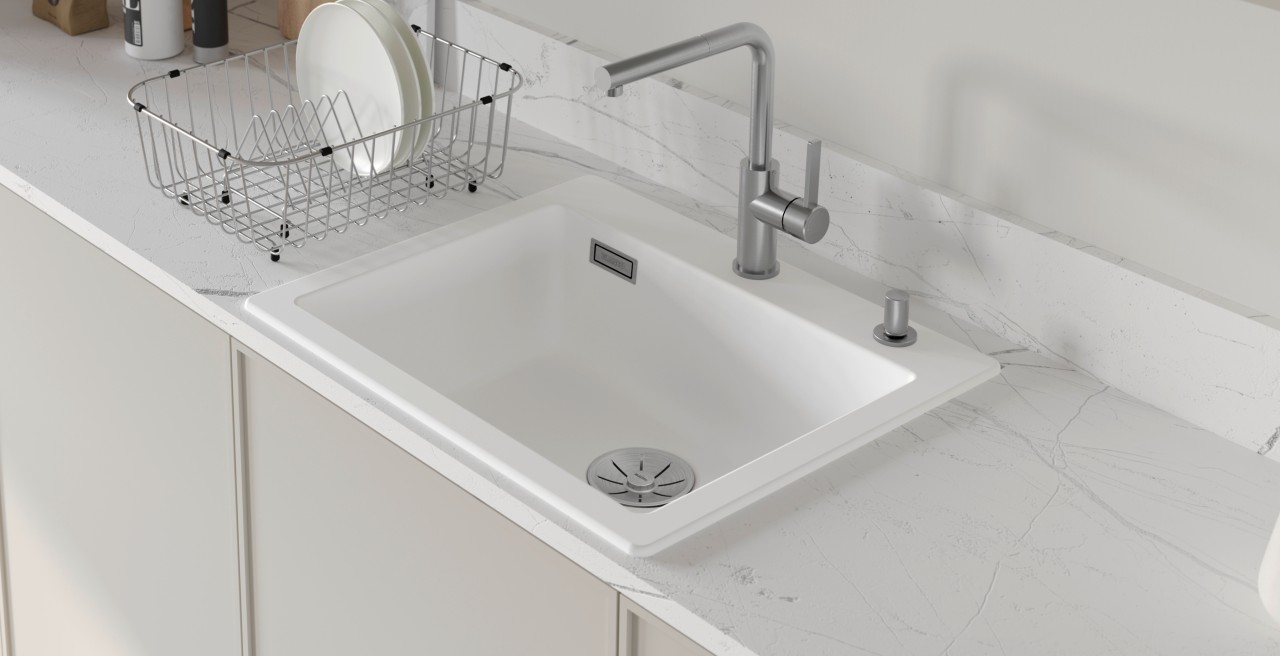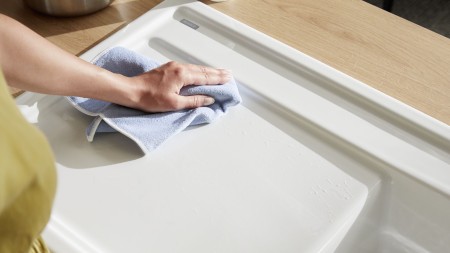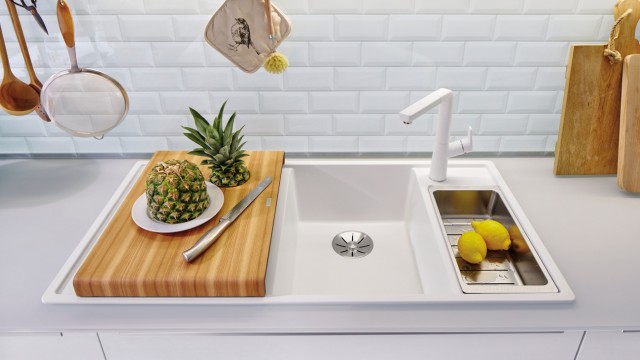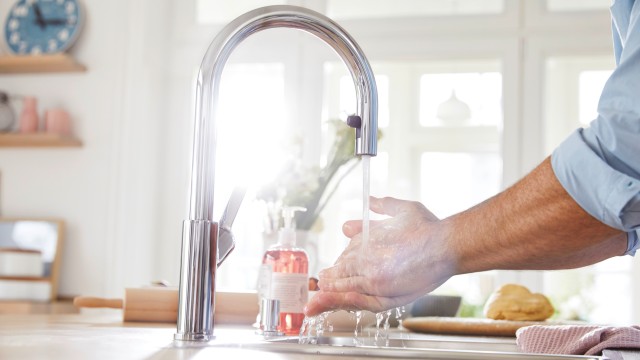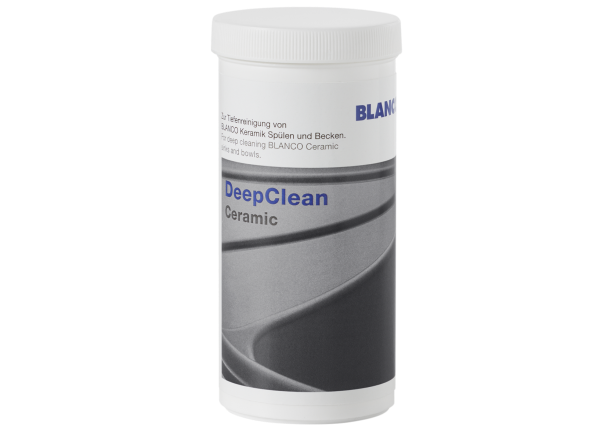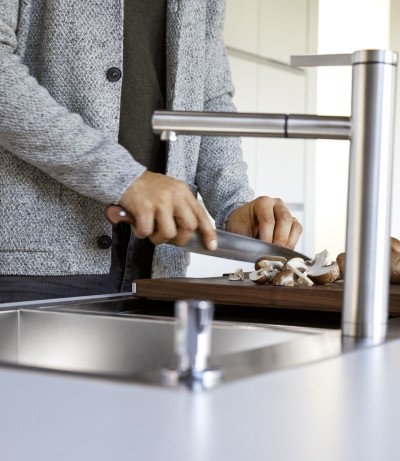Ceramic sinks are rightly considered easy to clean. Their surface is smooth, hard and completely closed. This prevents dirt and liquids from penetrating the material. To keep your sink beautiful for a long time, you should consider some points when cleaning ceramic. In our video, we show you the three stages of cleaning and give recommendations for suitable care products. This way you will enjoy your BLANCO sink for many years!
When vegetables, meat and fruit have all done their worst on the ceramic sink, you’d expect to be faced with something of a disaster. But you don’t need to worry about all that with your ceramic sink. The smooth and completely unbroken surface ensures that no dirt can settle on it. What’s more, any soiling that is visible after long cooking sessions is easy to tackle. Just get a soft sponge, a little washing-up liquid and warm water, and wipe it away. A microfibre cloth is best for rubbing it dry. However, steer clear of scouring agents, steel brushes and aggressive mixer tap cleaners containing chlorine. Your ceramic sink won’t like these at all.
